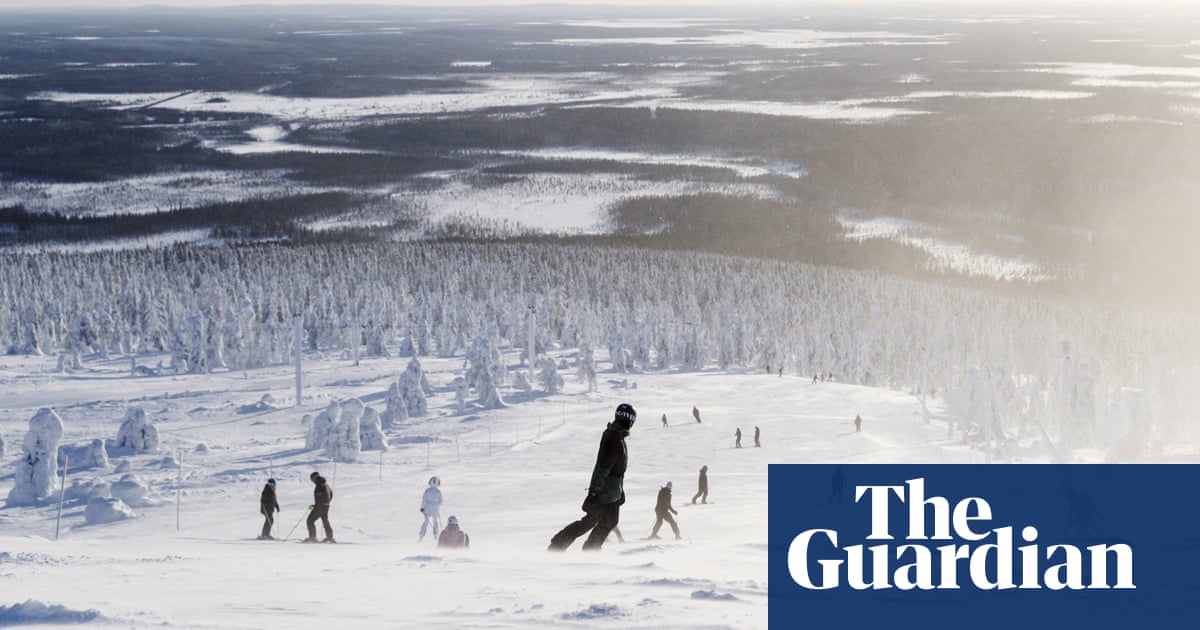Before the arrival of electric fridges and freezers, people across Finland would saw a block of ice from a river or lake before the spring thaw, thickly cover it in an insulating layer of sawdust and stack it in barns, pits or ice cellars to protect produce from the warm air of the summer months.
Amid global heating and increasingly unpredictable shorter winters, a modern twist on the traditional jään säilöminen (ice preservation) technique is now being touted as a way to save Europe’s struggling low- and medium-altitude ski resorts.
Last month, the large French alpine ski resort Alpe du Grand Serre in the Isère announced it had been forced to close because it could not afford to become a year-round destination to offset its shorter winter season.
Finns have used sawdust to preserve snow for decades, including for winter sports. More recently, they have deployed mats made of extruded polystyrene, the same material used in home insulation across the Nordic countries, which the manufacturers say lasts more than 20 years.
The mats have been in use at ski resorts in Finland for several years – including at Levi in Kittilä and Ruka in Kuusamo – but this is the first season its developers, the Finnish company Snow Secure, have supplied snow storage outside Finland.
It is being used in Tromsø Alpinpark in Krokelvdalen, Norway, and Saas-Fee, in Sastal, Switzerland, and from next year in Sierra Nevada in Andalucía, Spain, the southernmost ski resort in Europe, Tyrol Basin in Wisconsin and Ski Apache in New Mexico in the US.
The principle of such snow farming is to collect snow at the end of the season to store and use at the start of the next. Marko Mustonen, the business manager of Levi ski resort in Kittilä, said it started recycling snow in 2016 to guarantee it could open in time for the annual World Cup Slalom in November. The beginning of winter he said, is less and less predictable – even in northern Finland. “The timeframe when we get the real winter, which means temperatures go below zero all the time, it can be from early October to mid-November.”
Making snow “when Mother Nature allows us to make snow” also means the resort does not need to rely on more energy-intensive artificial snow when temperatures are warmer, he added.
He said snow levels on the resort’s main trails this week were the same as they had been at the same point last year, despite September and October being exceptionally warm and air temperatures going below zero only in the past few days. “Because we have snow recycling we have been able to do exactly the same as last year for the start of the ski season.”
Levi was receiving inquiries from ski resorts around Europe about snow farming, Mustonen said. “It’s getting more and more interest and we’re getting a lot of ski resorts from the Alps and other European ski resorts asking about it,” he said. “They have been curious to hear the results and how we do it.”
Antti Lauslahti, the CEO of Snow Secure, said being able to guarantee the resort’s opening date allows businesses to reliably book staff, and tourists knew they wouldn’t be faced with last-minute disappointment. “The beginning of the season has become very unpredictable due to climate change.”
Northern Finland is expected to see more snow as a result of a warmer climate putting more moisture into the air, but the greater variability, the changing length of the season and the quality of snow pose significant obstacles to winter sports.
after newsletter promotion
“It takes longer in the autumn to for the seasonal snow cover, and it may melt earlier than earlier,” said the geophysicist Sirpa Rasmus, a researcher at the University of Lapland’s Arctic Centre. “Snow may come in the autumn, but then melt partially or altogether, and again and again several times.”
Kati Anttila, a geophysicist at the Finnish Environment Institute, said snow changes were already affecting winter sports in Finland’s south, with wide variation between winters.
In Helsinki, the mean length of the snow season between 1991 and 2020 was 97 days. But in 2019, the snow season was just four days long. “In southern Finland it is already very uncertain to organise skiing competitions because the snow conditions are so unpredictable and there have already been winters in the south when there has been hardly any snow,” she said.
“This, combined with the increasing amount of rain and lack of sunlight in the winter, will make southern Finland a very dark place during winter.”

